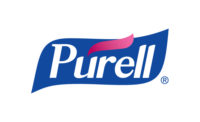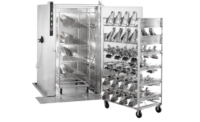The Baking Industry Forum, a special group aligned to the Bakery Equipment Manufacturers and Allieds organization (BEMA), is in place to tackle the issues of the baking industry in a collaborative forum where members from the OEM community, together with bakery manufacturing professionals, tackle key issues challenging the industry. The topic for this article, sanitation, offers views from both an OEM and a bakery company.
Delia Justable
Food manufacturing requires an effective cleaning cycle that considers many factors, including chemistry, method of cleaning, frequency and soil. Defining the cleaning efficacy is a tedious task that each food facility must consider to reduce potential microbiological and quality issues. Modeling sanitation ahead of time by outlining key requirements by area and challenging success criteria are key to defining cleaning efficacy. Success criterias can be based on regulatory, third party audits or internal requirements.
Preventative measures such as hazard analysis of each systems or areas are a great start to evaluating risk. Risk assessment should address inherent opportunities within the food manufacturing process—for example, equipment cleanability and what is required to maintain to an acceptable level.
From an OEM’s perspective, we view this as an opportunity to design equipment with hygiene in mind to produce food safely. Current or established equipment presents many challenges due to equipment age, design and processing environment.
Cleaning requirements vary for different food manufacturing customers:
- Ensure material construction is clearly identified (i.e., stainless steel)
- Identify chemistry being used on the equipment as it relates to equipment material construction (i.e., acid/alkaline properties)
- Understand the method of cleaning (i.e., wet and/or dry clean)
- Understand the frequency of cleaning
- Identify what types of soils (fats, carbohydrates, proteins, etc.) will be on the equipment, define if allergens are present, and determine any kosher or gluten-free requirements
- Processing and product temperature requirements (i.e., cooling or heating extremes)
- Define disassembly instructions for cleaning and other periodic maintenance
Increased expectations from customers have shifted the focus to sanitary equipment design. The cleaning requirements listed above are excellent questions to drive a more-proactive approach to maintaining equipment to an acceptable level and overall equipment design for both new and established equipment.
Karl Thorson
It is critical that the baker provide the OEM and the team with clear success criteria related to cleaning to ensure efficient, effective, repeatable equipment design. First and foremost is safety, both to employees and our consumers. We also expect that the equipment can be cleaned and maintained to our standards over the life cycle of that asset. Clear metrics should be communicated around acceptable cleaning timelines and cleanliness goals (e.g., visibly clean, below quality indicator microorganism thresholds, below allergen analytical detection levels). To meet those metrics, the team needs to discuss and address the following variables, as defined in the GMA Sanitary Design Checklist:
- Ease of disassembly and reassembly (quick changeover principles)
- Minimizing the amount of surface areas to clean and the complexity of the geometry
- Materials of construction compatible with the cleaning process (e.g., chemicals, abrasives, temperature, etc.)
- Soil(s) to be removed (baker’s responsibility)
- Provide key characteristics including basic formula breakdown (e.g., high-protein, viscous, sticky, low-pH product with a low water activity) for all products/ingredients
- Cleaning method(s) (wet, dry, controlled wet clean) (baker’s responsibility)
- Prioritize dry cleaning as the preferred method for the following reasons
- Decreased water = reduced total life cycle costs
- Reduced micro risk, reduced chemical usage and therefore reduced exposure of employees, reduced waste water/environmental impact, reduced cleaning time
- increased sustainability, increased equipment reliability
- Chemicals—only if needed (chemical supplier’s responsibility)
- Cleaning and sanitizing needs
- Room conditions (baker’s responsibility)
- Extreme temperature changes
- Humidity, condensation concerns
During design, the manufacturing process is modeled to ensure intimate understanding of equipment’s interaction with other equipment, the product, the facility and the employees. This modeling should also be completed for the cleaning processes. Early management related to design for cleaning success is key in minimizing food safety and financial impact to the business.
BIF, BEMA’s Baking Industry Forum, provides the industry with a strong resource for ideas and expertise based on research and years of experience. Seven bakers and seven suppliers work together as the Baking Industry Forum. This committed group explores issues common to everyone in the baking industry, such as preparations for FSMA, the importance of training, how to hire veterans, safety and more. For more information, visit www.bema.org/bif.






